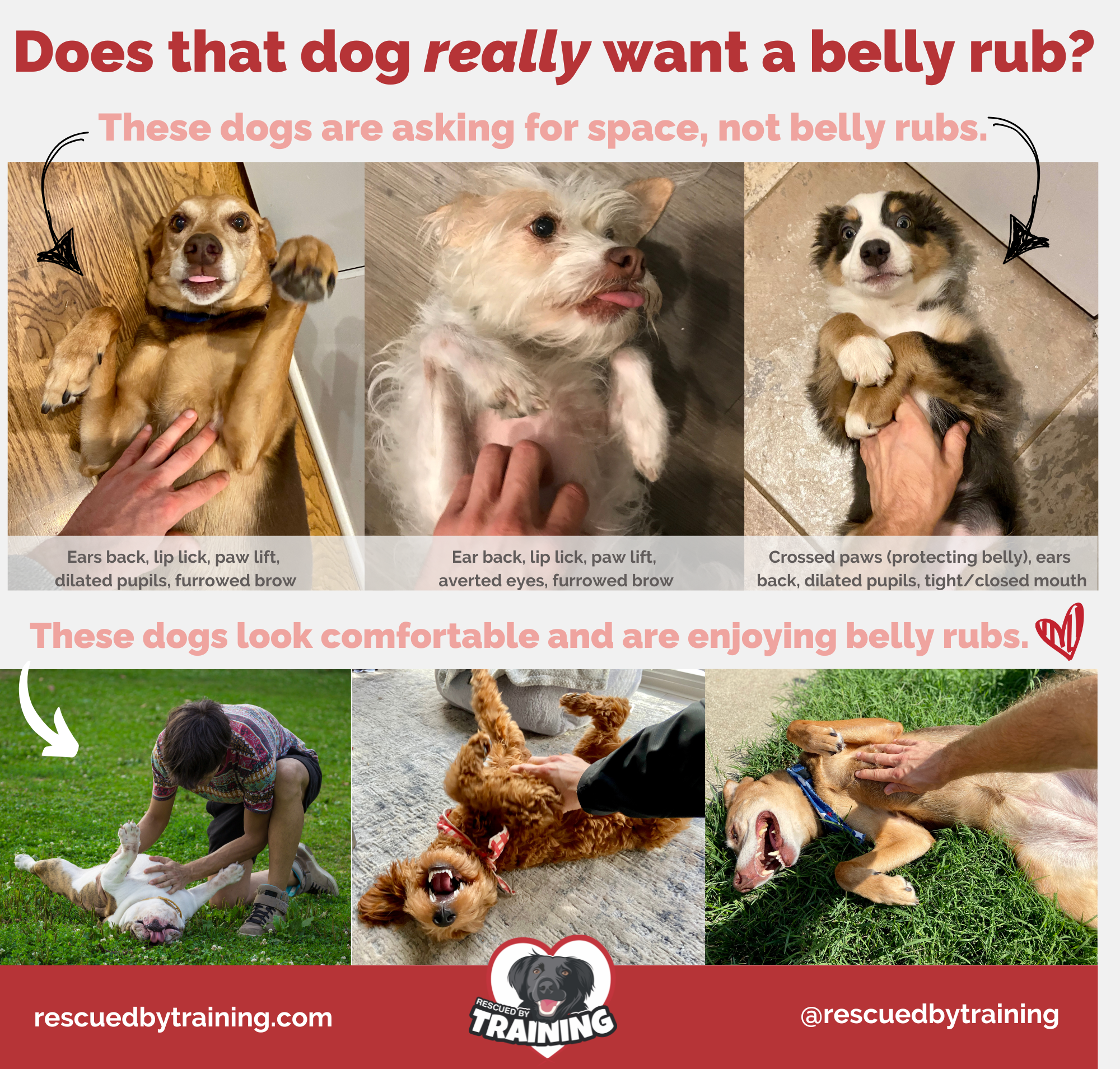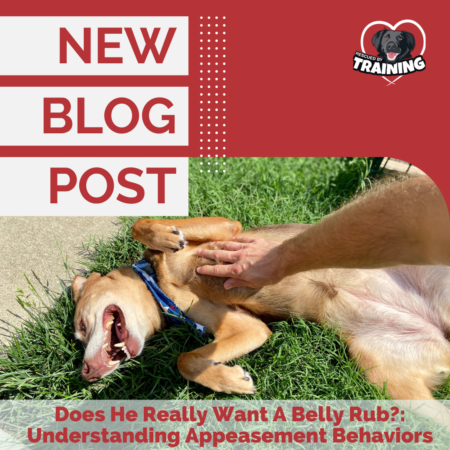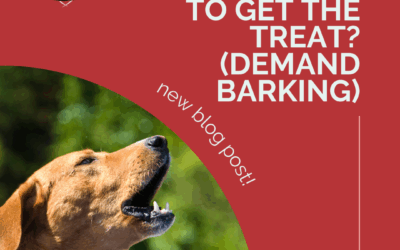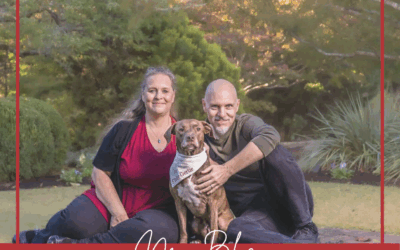Turid Rugaas, a Norwegian dog trainer, came up with the term “calming signals” to refer to the appeasement behaviors dogs do. People will often coin these as submissive or deference behaviors. Many dogs will use this body language signs to de-escalate a situation or communicate they’re not a threat, when they are feeling unsure, uncomfortable, or fearful. Body language awareness is so key to helpful your dog feel safe. Grab my dog communication handout here!
Similar to displacement behaviors, which are normal behaviors that are performed out of context, and can indicate if a dog is conflicted or anxious, displacement behaviors more often are the dog trying to self-soothe, similar to humans when we’re a little unsure of a situation and we may fidget and do activities like twiddle our thumbs or maybe play with our hair. Unlike displacement behaviors though, appeasement behaviors are communication for another being, like a dog, human or cat and can be communicating that the dog is asking for space. There are some similarities/crossovers in what we see, though.
Some common appeasement behaviors include:
- Rolling on back/exposing belly
- Nuzzling
- Jumping up
- Paw lift
- Teeth chattering
- Tucking tail
- Freezing
- Lowering head
- Submissive urination
- Yawning
- Lip licking
- Sniffing the ground
- Submissive grinning
- Scratching
The belly up one is the probably the most commonly misinterpreted one. People have been taught that if a dog rolls over, they must want a belly rub. When in reality, a lot of dogs will expose their belly as an appeasement behavior, essentially asking for space, trying to communicate they’re unsure and then the human reaches in and touches them in a vulnerable position, which is the exact opposite thing they were after. I’ve had numerous clients report their dog rolled over, someone reached to give them a belly rub and the person got bit or snapped at. In the dog’s mind, they were communicating a need to ask for distance, which got ignored by the person reaching to pet them, so the dog escalated their communication to be more clear that they did not want to be touched.
Appeasement behavior can look extremely submissive or fearful, with the dog making himself small, tucking the tail, lowering the head or body, all in attempt to look less threatening. But dogs can display appeasement behaviors even when standing, walking away, or approaching, which is also confusing for people like a dog exposing their belly. People assume that if a dog is approaching, that they must want an interaction. Often a dog approaches and the person sticks their hand out so the dog “can smell” the person.
Dogs have an incredible sense of smell. We have around six million smell receptors and dogs have an astounding 300 million. You do not need to stick your hand into their face for them to smell you. And by doing this, if the dog is afraid, you’re just confirming that, because now you’ve invaded the dog’s personal space. Even if the dog isn’t necessarily afraid, by sticking your hand out in their personal space, you’ve removed their option to consent to have an interaction.
I try to help people understand that sometimes a dog will approach to investigate – sort of a “fact-finding” mission, to determine if you’re safe. These dogs may be a little conflicted. They may sort of want an interaction but they’re unsure. Often we will see a “stretch investigation” where they stretch the front part of their body to sniff or get close but their back legs are planted in case they need to make a getaway. If you suddenly reach down to pet or try to feed the dog, you’ve likely just confirmed to the dog by invading their personal space, that you’re not safe.
Similarly people think hand feeding fearful dogs is the way to make them less fearful, and this isn’t something I recommend. We’ve been told that food is the way to train dogs and to get them to like things. And that’s true, except it’s missing the critical piece that in order to hand feed a dog, the person – the very thing your dog is afraid of – needs to get into your dog’s personal space to deliver the food. If you have a dog who is afraid of strangers, this proximity automatically puts your dog over threshold and puts that stranger within biting range. I’ve had several clients come to me after trying this and say something like “we gave our friend some chicken to feed the dog and the dog took the chicken and then bit their hand.” This happens often.
So how can you tell the difference? Does that dog want a belly rub or not? It’s all in the rest of the body language. An appeasement belly up will often also have ears pulled back, lip lick, tail tucked or hugging their body. They may also avert their gaze or turn their head. These are all signs the dog is not asking for a belly rub, but signaling they want distance and are nervous or unsure.

Dogs that rollover and wiggle into your space, are eagerly wagging their tail, looking directly at you, have an open mouth, and who were displaying clear, prosocial, friendly behavior before rolling over on their backs likely want to be touched. Dogs who are social and want to be touched will be very clear in their body language. We’ve all seen wiggly, happy dogs who clearly want interaction. And by all means, pet that dog.
Be sure to sign up for my free weekly newsletter so you don’t miss out on big announcements, videos, personal stories, client successes and more! And don’t forget my self-paced courses, available here!
Contact me or schedule a session if you need help.
If you want a deeper dive into the research on this topic here are two papers you can read:
- Tiira, Katriina & Sulkama, Sini & Lohi, Hannes. (2016). Prevalence, comorbidity, and behavioral variation in canine anxiety. Journal of Veterinary Behavior: Clinical Applications and Research. 16. 36-44. 10.1016/j.jveb.2016.06.008.
- Pedretti, Giulia & Canori, Chiara & Biffi, Eleonora & Marshall-Pescini, Sarah & Valsecchi, Paola. (2023). Appeasement function of displacement behaviours? Dogs’ behavioural displays exhibited towards threatening and neutral humans. Animal Cognition. 26. 1-10. 10.1007/s10071-023-01742-9.
Happy training!
![]()




